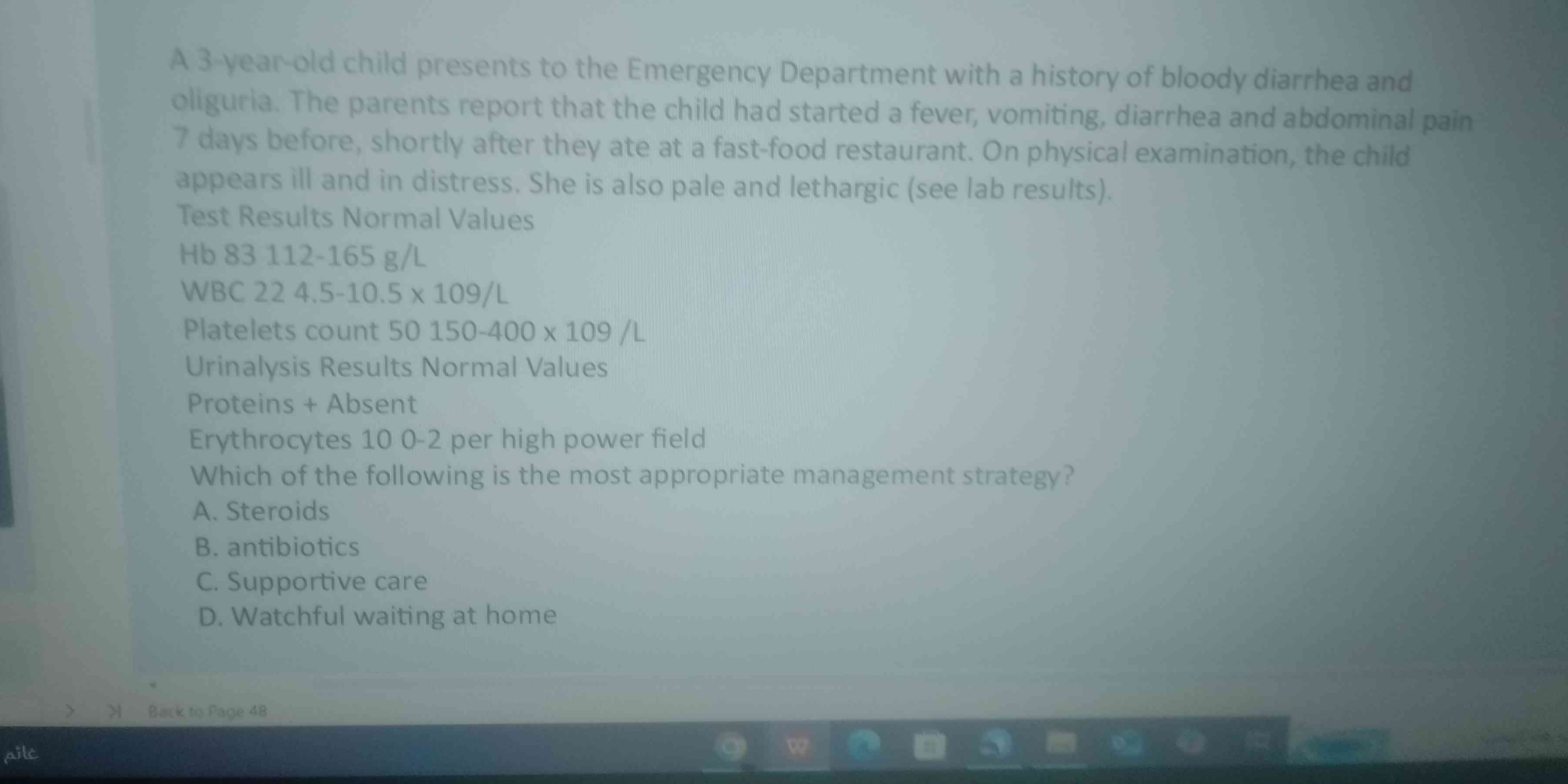A 3-year-old child presents to the Emergency Department with a history of bloody diarrhea and oliguria. The parents report that the child had started a fever, vomiting, diarrhea an... A 3-year-old child presents to the Emergency Department with a history of bloody diarrhea and oliguria. The parents report that the child had started a fever, vomiting, diarrhea and abdominal pain 7 days before, shortly after they ate at a fast-food restaurant. On physical examination, the child appears ill and in distress. She is also pale and lethargic (see lab results). Test Results Normal Values. Hb 83 112-165 g/L. WBC 22 4.5-10.5 x 109/L. Platelets count 50 150-400 x 109 /L. Urinalysis Results Normal Values. Proteins + Absent, Erythrocytes 10 0-2 per high power field. Which of the following is the most appropriate management strategy? A. Steroids B. antibiotics C. Supportive care D. Watchful waiting at home

Understand the Problem
This question describes a clinical case of a 3-year-old child presenting with symptoms suggestive of a possible infection or other medical condition. The provided information includes the child's symptoms (bloody diarrhea, oliguria, fever, vomiting, abdominal pain), history (recent fast-food consumption), physical exam findings (ill appearance, distress, pale, lethargic), and lab results. The question requires you to determine the most appropriate management strategy based on these findings.
Answer
Supportive care is the most appropriate management strategy.
The most appropriate management strategy is supportive care.
Answer for screen readers
The most appropriate management strategy is supportive care.
More Information
The child's symptoms and lab results (bloody diarrhea, oliguria, low hemoglobin, high WBC count, low platelet count, proteinuria, and hematuria) are suggestive of Hemolytic Uremic Syndrome (HUS). HUS is often caused by E. coli infection, and antibiotics are generally avoided as they may increase the risk of HUS. Steroids are not typically indicated in the management of HUS. Supportive care, including fluid management, blood transfusions, and dialysis if needed, is the mainstay of treatment.
Tips
A common mistake is to administer antibiotics, which might worsen the condition in this case. Recognizing the signs and symptoms of HUS is crucial for selecting the appropriate treatment.
Sources
- Hemolytic Uremic Syndrome (HUS): Symptoms & Treatment - my.clevelandclinic.org
- Hemolytic Uremic Syndrome (HUS) - Heme - Medbullets Step 2/3 - step2.medbullets.com
- [PDF] An Overview of Pediatric Hemolytic Uremic Syndrome - renaissance.stonybrookmedicine.edu
AI-generated content may contain errors. Please verify critical information